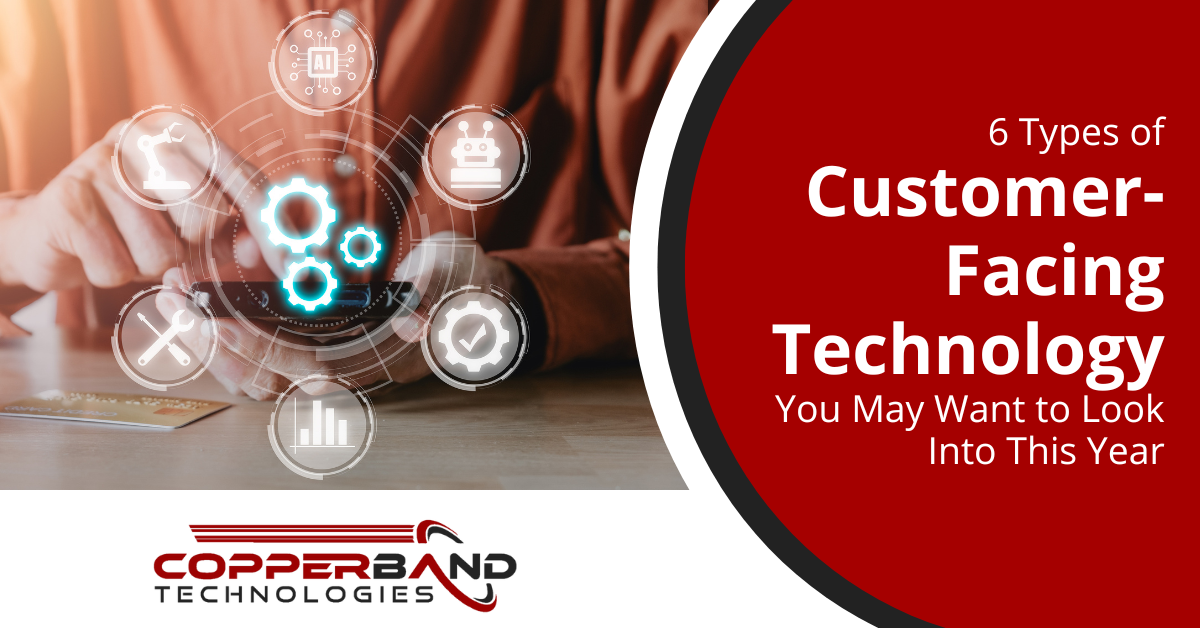6 Types of Customer-Facing Technology You May Want to Look Into This Year

Customer-facing technology refers to any technology that is used to interact with and serve customers. This can include point-of-sale systems, self-service kiosks, websites, mobile apps, and other types of technology that allow businesses to communicate with and provide services to their customers. These technologies can be used to improve the customer experience, streamline interactions, and enhance efficiency.
One important aspect of customer-facing technology is that it allows businesses to gather data about their customers’ needs, preferences, and behaviors. According to a forecast by Statista, it was expected that there will also be an increase in the amount of money spent globally on technology related to customer experience (CX). This increase would be from around $500 billion in 2019 to over $640 billion by 2022. Furthermore, the rise of internet-connected consumer electronics has given companies access to a wealth of information about their customers’ experiences and needs. This article provides useful information on some customer-facing technologies you may want to consider this year.
Customer-Facing Technologies You May Want to Consider
There are many customer-facing technologies that are interesting to have and can be used to improve the customer experience.
1. Self-Service Kiosks
Self-service kiosks are interactive kiosks that allow customers to place orders. Customers can also make reservations, or access information on their own, without the need for assistance from a human representative. These kiosks are typically located in high-traffic areas. These can include airports, malls, and fast food restaurants and are designed to be user-friendly and easy to use. Customers can typically interact with self-service kiosks using a touch screen, keyboard, or another input device. The kiosk may also have a printer or other output device for generating tickets, receipts, or other documents. Additionally, self-service kiosks can be used for a wide range of applications. From ordering food and checking in for flights, to making hotel reservations and purchasing tickets for events.
2. Chatbots
Chatbots are designed to have conversations with people, in a way that resembles human interaction. They can be used to provide customer support, answer frequently asked questions, or guide customers through a process. Chatbots are often used on websites and messaging apps. They can be integrated with other tools such as social media platforms. Additionally, customers can interact with this technology in real-time using natural language, and the chatbot will respond with automated messages. There are several types of chatbots. They include rule-based chatbots, which follow a set of predetermined rules to determine how to respond to a user’s input, and artificial intelligence (AI) chatbots, which use machine learning algorithms to process and respond to user input in a way that is similar to how a human would.
3. Mobile Apps
Mobile apps are software applications designed to run on smartphones, tablets, and other mobile devices. They can be used for a wide range of purposes, including communication, entertainment, productivity, and much more. Mobile apps are typically developed for a specific platform. For example, iOS for Apple devices or Android for devices running the Android operating system. Many companies now offer mobile apps as a way to provide customers with convenient access to their products or services. For example, a bank may have a mobile app that allows customers to check their account balance, pay bills, and transfer money. Mobile apps can be an effective way for companies to engage with their customers and provide a more convenient and personalized experience.
4. Virtual Assistants
Virtual assistants are artificial intelligence (AI) systems that can be used to perform tasks or provide information on behalf of a user. This technology is often accessed through voice commands and are designed to understand and respond to natural language input. Additionally, virtual assistants can be used for a wide range of purposes, including setting reminders, answering questions, making recommendations, and much more. They can be accessed on a variety of devices, including smartphones, tablets, and smart speakers. Some examples of virtual assistants include Apple’s Siri, Amazon’s Alexa, and Google Assistant. These assistants can be used to perform tasks such as setting alarms, playing music, providing weather updates, and much more.
5. Augmented Reality
Augmented reality (AR) is a technology that enables users to see and engage with digital information in the context of their physical surroundings. It involves overlaying digital content onto the user’s view of the physical world. Furthermore, this is typically done through a smartphone, tablet, or other device equipped with a camera. There are many different ways in which augmented reality can be used. For example, it can be used to boost the user’s experience of a physical location, such as by displaying information about nearby landmarks or points of interest. AR technology has a wide range of applications, including entertainment, education, retail, and more. It has the potential of transforming the way we interact with the world around us. It can also provide a more immersive and interactive experience.
6. Personalization Technologies
Personalization technologies use data about customers to tailor their experience in some way. For example, personalization technology might use data about a customer’s past purchases or browsing history to recommend products or show content that is more relevant to the customer’s interests. Personalization technologies can be used in a variety of settings, such as online stores, social media platforms, or email marketing campaigns. There are many different types of personalization technologies, and they can be implemented in various ways. For example, an online store might use cookies to track a customer’s browsing history and show related products when the customer returns to the store.
Let Copperband Technologies Assist You with Your Technology Needs
Technology is crucial for the success of businesses, but unfortunately, not many companies are able to fully capitalize on its potential. Contact us today to boost your company’s growth potential this year through IT.






